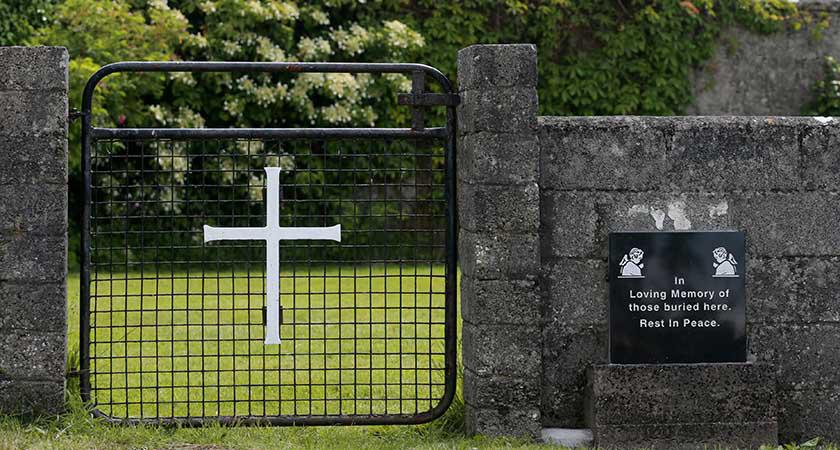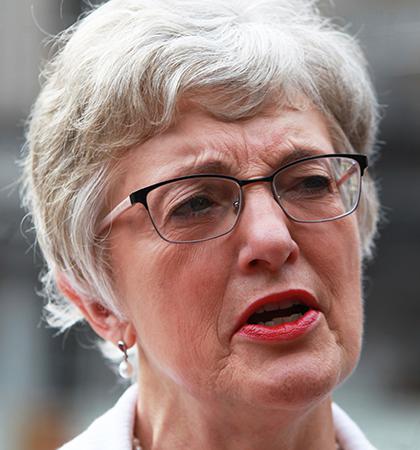|
Specialist international team to perform DNA analysis on Tuam Babies grave in west of Ireland
By Erica Doyle Higgins
A SPECIALIST team will be brought in to perform DNA analysis on the remains found in the mass grave at the Mother and Baby Home in Tuam. The bodies of 796 young children and babies were found in 2012 on the old grounds of the Bon Secours Mother and Baby home in Tuam, Co. Galway. The home was run by the Bon Secours Sisters on behalf of Galway County Council from 1925 to 1961. To date, three excavations have taken place on the site but no exhumations have been performed. Minister for Children and Youth Affairs Katherine Zappone made the announcement of the appointment in Dáil Éireann. “While the Commission has concluded its excavations in Tuam, it has not yet reached any formal conclusions about the burials,” she said. “I have appointed Dr. Niamh McCullagh, Forensic Archaeologist, to bring together a team of international experts in DNA analysis and forensic anthropology to provide us with the necessary advices.” The team will be made up of three experts, Niamh McCullagh, Dr Hugh Tuller, a forensic anthropologist from the United States and British forensic scientist Dr Tim Clayton. Niamh McCullagh, who will be heading the team, is an Irish-based forensic archaeologist who has previously worked in the recovery of the remains of The Disappeared as well as the excavation of the mass grave in Tuam earlier this year. The team will consult with additional experts as well as arranging for further geophysical surveys to examine the extent of potential burials on the full site in the ownership of Galway County Council. The experts will produce the initial report on the options available to deal with the remains from the Tuam site by June 30, with a later report due by the end of September 2017 detailing each option in depth. These will examine the potential to identify the remains of children buried on the site, and the logistical and technical challenges that would be involved in the identification process. The management and conservation of the Tuam site, as well as the best practice in the event of a decision to proceed with full or further partial excavation with a view to the exhumation of human remains and measures necessary to protect the human remains interred on the site during any works which may be undertaken will also be examined. Going forward with the Mother and Baby Home Commission of Investigation, Minister Zappone also said there will be detailed consultations held with those who were in the Homes without their mothers to explore the services and supports in the area of health and wellbeing which may be of ‘genuine and practical value to them now.’ “My Department will issue an invitation to former residents and those with personal connections to these institutions, seeking expressions of interest in participating in this facilitated process. “I want to listen, learn and respond to the needs of former residents. The outcome of these meetings will inform my proposals to Government so that we can have appropriate supports in place as quickly as possible. ” In March this year, the Commission, which had carried out three test excavations at the site since 2015, said the first test had “identified a particular area of interest” after a number of anomalies were considered worthy of further investigation. In further test excavations in November 2016 and January 2017, test trenches were dug revealing two large structures. One structure, the Commission said, appeared to be a “large sewage containment system, or a septic tank,” which had been decommissioned and filled with rubble and covered with soil. The second structure, however, is a long structure divided into 20 chambers, 17 of which contained “significant quantities of human remains.” The Commission said: “A small number of remains were recovered for the purpose of analysis. “These remains involved a number of individuals with age-at-death ranges from approximately 35 foetal weeks to 2-3 years. “Radiocarbon dating of the samples recovered suggest that the remains date from the timeframe relevant to the operation of the Mother and Baby Home.” The Bon Secours Mother and Baby Home operated from 1925 to 1961, and the Commission said “a number of the samples are likely to date from the 1950s.”
|
.
Any original material on these pages is copyright © BishopAccountability.org 2004. Reproduce freely with attribution.

